 Read the peer reviews for this feature
Read the peer reviews for this feature
People are travelling less. That may sound strange to the rail industry, where passenger numbers have doubled in 20 years, but it is clear that overall land travel per person in England has decreased significantly. It is now 10% lower than it was before the 2008 recession (see graph, page 11).
The average number of miles travelled by English residents peaked in 2007. It fell sharply, then stabilised. That has been masked by population growth of 12% between 1995 and 2014, largely through immigration which has been concentrated in the South East.
We are making fewer trips, although our trips are longer in both time and distance. In 2015, the average stood at 6,500 miles a year. Cars accounted for just over 80% of that, and rail carried around 9%.
Rail’s growth is due to a greater proportion of the population travelling by train, rather than existing passengers going further or more frequently.
All this we know from the National Travel Survey and from research by the Independent Transport Commission. What we don’t know is how this will play out over the coming decade.
There is a clear divide between different generations of transport users. Younger people are less likely to own a car than before, and are more likely to be reliant on public transport.
This divide is sharpest in London. In the capital, the number of bus journeys has doubled since the 1980s, whereas in the rest of the country, the number has fallen by more than a third. London now accounts for more than half of all bus journeys. Car use is also falling faster there than elsewhere.
Perhaps the most significant change is that a correlation between income and travel has weakened. In the past, the more money we had, the more we travelled. Mobility was a function of wealth.
Rail travel per person has continued to rise, despite fares increasing by 25% in real terms over the past 15 years. Meanwhile, car driving per adult has declined, despite motoring costs remaining stagnant. Rail has always been used most by the richest quarter of the population - people with limited money are still less likely to take the train, although rail use has increased across all income groups.
“We look at transport as an economic project,” says David Brown, chief executive of Transport for the North. “It is a means to an end. The end for us is more jobs and economic growth. We need to link places of economic activity, and we are modally agnostic.
“Will there be a drop-off with new technologies? Despite lots of people saying there will, it does not seem to be the case. Our modelling shows people will travel more often and longer distances for both work and leisure.”
“For someone who can never be satisfied, plenty is not enough,” comments Professor William Powrie, Dean of the Faculty of Engineering and the Environment at the University of Southampton.
“When you look at what we could use in health services, in energy or in transport, as a society we have an insatiable appetite. Transport policy has almost always been on a basis of ‘predict and provide’. That gets us into an untenable position.
“Take a step back. Our use of transport is very different from what it was 20 years ago - not just in commuting patterns, which have seen the London effect getting wider and wider. We are chasing our own tails. Improving journey times and increasing capacity encourages people to live further from where they work.
“Look how quickly supermarkets run out of stock, because the warehouses are now lorries moving on the motorways. Look at factories such as Jaguar Land Rover - they don’t want to store components, they want to offload components straight from the lorry onto the production line. Why? Because all the improvements we have made have just fuelled demand by changing the pattern of business, as transport has got cheaper as a proportion of total costs.
“Ford makes engines in Bridgend. But the block is cast in one place, machined in another place and assembled somewhere else. The engine criss-crosses Europe up to half a dozen times by the time it reaches the buyer at the showroom. We wouldn’t work like that if transport was not fundamentally cheap.
“Using transport as a moving warehouse is clearly not a good thing. Transport does not meet our needs, because we allow our needs to be driven by what is available and affordable. We need to generate new patterns of housing and employment that drag people away from that.”
“Look how fast our city centres are changing,” observes John Dawson, founding chairman of the International Road Assessment Programme and chairman of the management committee of the Road Safety Foundation. “They are no longer transport-intensive in any real sense. They are cultural and entertainment centres: restaurants, coffee shops, theatres, discretionary shopping, courts, local government and niche businesses.
“In major cities, one-third of travel is into or around the centre, and best catered for by public transport. Two-thirds is criss-cross movement better catered for by more flexible systems.
“Manufacturing has long since relocated to the motorway network. The city centre load is getting lighter. It’s all about people movement. Look at the growth of urban cycling, only possible because of this change. Only just over half of rail travel is now about business and commuting. The rest is discretionary.”
Brown adds: “Transport is one part of the economic picture. We need to drive economic growth, not respond to it. It’s about skills, education standards and more. We identify the requirements on a corridor basis, not by mode - to have a clear plan is not just about improving the roads or buying new trains.
“For example, we think there is huge economic opportunity in what we call ‘energy coast’ - the energy research, generation and delivery across a number of sites in the north of England such as Cumbria, the Humber and Teesside. These need to be better connected to each other and to the big urban areas to satisfy their need for more skilled people.
“If you use the corridor between Leeds and Manchester, Highways England focuses on the M62. Network Rail is looking at the trans-Pennine rail route. The Department for Transport is looking at what train services it should put on the franchises using it. But we need to add up all the needs of all the passengers and freight on that corridor for one multi-modal approach to get the best out of the whole. To have a clear long-term plan like that is not often done.”
Four out of every five miles travelled by British people are by car. Rail accounts for less than one mile in ten. Car travel increased rapidly from the end of the Second World War until the mid-1990s, after which the growth gradually levelled off. That led analysts to suggest we had achieved ‘peak car’, whereby mileage per person no longer increased, regardless of economic growth.
The steepest fall in car use has been among men under the age of 35. The holding of driving licences has been falling (see graph, page 11), and the number of people taking the driving theory test has been dropping for some years. In London, millennials (people born since 1980) are also using the bus and the Underground much more, and walking less.
Young people are travelling in patterns that differ significantly from previous generations. In its On The Move study, The Independent Transport Commission concludes that this could be due to less secure employment, stagnant wages for younger people, high student debt, unaffordable housing costs (especially in London and southern England), and a reliance on shared living accommodation coupled with the postponement of marriage and parenthood. All these issues combine to create a much less financially secure life for younger people than in previous generations.
The deferment of various life landmarks is resulting in a car-orientated existence becoming less common among younger people. And if it does occur, it is happening later in life.
Car and rail use will also be affected by changing age patterns of living. Younger people are much more likely to live in urban areas, especially in London. In shire towns and country areas, older people represent a much higher proportion of the population than they did 25 years ago. Car travel has fallen most slowly in rural areas, where dependency on cars is greatest.
“This will have to be plugged into our transport strategy,” says Dr Matthew Niblett, director of the ITC. “There will be a greater proportion of city dwellers who are commuting, compared with shire towns and rural areas. Younger people have different needs and wishes from their journey.”
A visit to Jaguar Land Rover’s design centre at Gaydon, beside the M40, is instructive. JLR has overtaken Nissan as the UK’s largest-volume car manufacturer. A new dual carriageway leads straight from the motorway to the gate, and a proliferation of cranes shows how fast it is expanding. No manufacturing is done here, but 5,500 people work on future models. 43 new product lines are in development.
Design work on the Jaguar I-Pace (a volume-production battery-powered family SUV) is largely signed off. Innovation Acceleration Manager Jim Johnston talks passionately about how enthusiastic motorists will start switching to electric power, for its greater driving performance as well as for its environmental benefits.
Development of autonomous vehicles is also under way. Commercially sensitive, it is kept out of sight. Driven by market demand, car manufacturers are investing heavily in what they believe is the long-term future of the automotive industry.
“Jaguar Land Rover are already in that space,” warns Brown. “They know that at some point the car will drive itself. They know the people inside it will want to have a coffee, do work, watch a movie and use social media while the car moves. But rail operators are still scrabbling around wondering whether to fit WiFi. Rail seems a long way behind the curve.
“Expectations are far higher than they were even five years ago. People expect more than just a seat on a crowded train, they need the ability to work and communicate while travelling.
“I turn up, I pay cash on the train, and the conductor gives me a very long piece of paper which I have to show to another person at the end. I have to stand up, and I can’t do anything else during those 30 minutes of my day. This is a very long way from the journey that car designers are already working on. Northern ticket machines now give you a ticket that seems two and a half feet long. If you travel for a month you end up with enough to wallpaper your office with it. That might be modernisation in railway terms, but everyone else is already using a smartphone.”
Rail use has increased in all areas. It is rising rapidly in large metropolitan centres, but is highest in London by a large margin.
“London has a particular capacity problem due to the huge jobs growth in the region,” says Niblett. “Population growth is disproportionately concentrated in the South East. To solve housing and development issues, rail will have an increasingly important part to play.
“But the same congestion problem is becoming evident in Manchester and in Birmingham. We cannot neglect the change in commuting in other metropolitan areas. I would like to see more investment in local rail connectivity. Rail is less than 10% of passenger journeys, so the road lobby is stronger and more dominant.”
“London is a mono-centric model,” says Brown. “People largely travel in, and travel out again. London is constrained, leading to a focus on mass transit. It has more people, less space and more defined travel patterns, whereas the North has lots of centres and points of economic growth. In the North, housing opportunities are more varied.
“The UK cannot keep on growing its whole economy by just pumping more and more investment into just one place. If we can get the connectivity right, and make it possible to live on the outskirts of Leeds and travel daily to work in Liverpool or Manchester, it becomes comparable to going into London. Business gets access to a greater labour force. We’re looking at the North as one economic unit, rather than a collection of cities and towns.”
Niblett adds: “Air quality in cities favours rail over road travel. Electric vehicles will mitigate that to an extent, but city centres are increasingly pedestrianised, and we are seeing increasing merits in high-density urban living over suburban sprawl. These suggest rail will continue to have advantages, but growth might not continue at the rate seen in the last 25 years.”
“The cost of transport systems should fall with automated vehicles,” says Dawson, of the Road Safety Foundation. “The costs in future will overwhelmingly be in the right of way, the infrastructure. That is unlike today on heavy rail, where a large portion of the costs arise from the vehicles and their operation.
“Looked at from a distance, the strikes over how many crew should be on a train are no more than friction as our transport needs evolve. But there are frictions at the road interface, too. For example, there is a public willingness to invest in highly automated vehicles which have some form of self-steering. But at the same time there is a public unwillingness to invest in maintenance of the roads.
“Personally, I’d like to think the end of mindless public subsidy for buses is in sight, and that they can be replaced by funding for Uber-type technology with on-demand mobility services in rural areas.”
Sarah Kendall, an independent consultant who has worked for Network Rail and train operators, and who is a commissioner at the ITC, believes that “we are going to be challenged on funding”, adding: “We are competing with hospitals and schools for national infrastructure spending. We will have to be more joined-up in our thinking and less bothered about our contractual structures and behaviours. Our days with an orange piece of cardboard are on the way out, and we need to be much more responsive to our customers.
“Too often a rail project doesn’t look beyond the rail boundary. We need to engage better with planners and regional authorities. Railways are too important to be just left to the people that run them.
“I’m looking out of the window across Cardiff towards the valleys, where I see railways built to get coal out of the hills to the port. Those railways have transitioned to passenger use, and are now overdue their next transition to cope with more capacity and new economic development.
“It is not just about feeding people to the centre of Cardiff, it is about feeding people into Caerphilly and Pontypridd where there are local employment markets. More like France, where rail planning across the Paris region is about connecting nodes in the suburbs, rather than just sending everyone into the centre.”
Rail Freight Group Chairman Tony Berkeley says: “There is a big challenge around smaller packages delivered to homes. Parcels is an area where rail has to change dramatically. It is not showing too many signs of that at the moment - the big freight operators are still recovering from the loss of coal.
“In London, the number of small white vans running around is indicative of too much freight being moved in very small unit loads. We need more consolidation centres to bring things by rail and then distribute in a more effective way. We have to reduce the impact, not just to control pollution but also the volume of traffic. We need a long-term plan, and we have to get away from ministers and civil servants micro-managing it.
“Rail keeps on saying it is less polluting than road travel, but electric cars will catch up. We need freight trains to travel at similar speeds to passenger trains, so they don’t eat up so much capacity. Electric-hauled they do that, on the whole. Quite a bit of freight goes over Shap, diesel-hauled and pretty slow near the top of the hill. Either they need electric power or they need passing loops. Everyone knows there are problems like this, but it is difficult to get changes agreed and implemented.”
Professor Powrie, from the University of Southampton, adds: “Rail has not been sufficiently adaptable. That is not rail’s fault - it’s a fault of the planning system, which has tried to chase existing demand.”
He believes the five-year funding cycles lead to a lack of vision for transport infrastructure. He says we do not take long-term decisions because it is politically expedient to patch up and keep going in the present direction.
“There are some lines that are busy all of the time, and some which are busy only at peak time. We should be looking at deliberate interventions that even out that demand both spatially and temporally.
“In fares, rail is simply doing this by pricing people off at peak times. If I go from Southampton to Nottingham, it costs £250 whether I go via London or Birmingham. We can hire a car for £40 and put in £30 of diesel, and take four people. There has been little boldness to avoid the constraints of the planning system or the fragmented nature of the railway.”
Niblett agrees: “Planning in five-year terms is obviously better than doing it annually. But it can restrict the vision - it doesn’t allow enough space for discussion at regional level. We would like more consultation and engagement with a wider range of people.”
“We really do need to move away from ‘predict and provide’,” adds Powrie. “HS2 is being built to cover existing patterns. Should we not have done Birmingham to Manchester first, and then done Manchester via Bristol to the South Coast? As a society would that not be more useful than just playing into the black hole that is London, gradually extending the capital’s horizon?
“Parts of the country are, in effect, full. There have been some attempts to deal with that - for example, moving parts of the BBC to Salford - but they have been piecemeal token gestures.
“By far the most investment in infrastructure goes to London. There is a case for changing that, deliberately planned over a long term. In terms of geography there is a case for deliberately not meeting London demand, promoting the creation of regional centres of employment in a more serious way than we have done.
“We cannot build more and more roads because of the severe damage in terms of pollution. A doubling of rail journeys would only dent car use by a few per cent. We cannot just keep increasing capacity.”
The ITC suggests that for younger people in particular, transport is increasingly seen as a service, rather than something that requires ownership of assets. Young people increasingly regard cars not as aspirations, but as appliances.
“The higher cost of living burden means learning to drive is no longer the priority it once was. I think younger people also see car ownership as less of a goal than they did a generation ago,” says Niblett.
“Uber is challenging local taxis,” says Brown. “Uber Pool is going to challenge buses. If you ask anybody under 20, they just use Uber all the time. If they get three or four mates to travel together, it’s cheaper than the bus or the train, and more convenient. That is the big disrupter - you don’t need to own any of the assets, you just pay for them on a daily or hourly or distance basis. We need to think now about how all this hangs together.”
Says Niblett: “The effect of autonomous vehicles will be to move from a system of private travel based on ownership to one based on utility. Being able to dial up an autonomous vehicle when you want it, for which you may not need a driving licence - that could change the entire premise of the way we travel.”
Dawson adds: “The real barriers are institutional, not technical. Like rail, it is essential to take roads out of a pure public sector environment. The Highways England brief will be extended to A-class roads over the next ten to 15 years. Road user fees will come.
“You will pay for roads as you pay for your mobile phone - a series of tariffs. Remember when we all used to pay the same road tax? That changed - it’s now based on the car you drive. You pay by direct debit. Mobility is becoming a personal monthly payment.
“That evolution will continue to the major roads. A pay-per-use model that is increasingly like rail travel. There is no reason why it cannot combine: you use your Ringo parking app already at the station, you use your phone app to book your rail ticket, and your bank card on the Underground. Motor insurance could come in as well. You will pay per road use, or use by mixed modes.”
Brown comments: “We are a long way from road user charging, because politically it is difficult. But what people want is a personal account they can use to travel, whether that is on a bus, a train or on a specific road. They want the cost to be debited automatically, and they want to trust that the price is reasonable for their particular journey.”
“Autonomous vehicles represent a disrupter,” argues Powrie. “They will be quite a long time coming, perhaps decades. The crisis - yes it is a crisis - of air quality in cities could force change earlier. There may be a collective awakening of society to recognise that we are making our cities unhealthy places in which to live.
“The railway should be a bit worried about this. A benefit of being on a train is that you can use the time to do something else. But once you’re in an autonomous road pod, it becomes an alternative place to work or relax. It could be a game changer. It will be electric, and that erodes rail’s environmental advantage.
“Most of our cars do nothing most of the time. A huge amount of capital is tied up in that. If you have on-demand pods with the same utilisation as rail vehicles, you won’t need anything like as many road vehicles. Autonomous pods will jolt us out of our current track.”
“These social and cultural changes are coming,” says Dawson. “Way over half of new car purchases are done by monthly payments, with people never actually owning their car. This is not alien to people.
“People park their car outside their house. It represents freedom and mobility. But nearly all a car’s life is spent parked. If you can change that mindset towards an Uber-style alternative, people will not need so many cars, at least in the big centres.”
Brown adds: “Ten years from now we will have one single infrastructure plan for the whole of northern England, driving economic growth. Our plan is out in June. We are rolling out the first phase of our smartcard ticket later this year, and we’ll have the case for HS3 next year.
“We think there will be massive growth in transport. The new TransPennine services between Edinburgh, Glasgow and Manchester Airport went from having no market at all to appearing in the list of the top ten most overcrowded trains in the UK. But public transport organisations will have to change the way they think. They must all include the ability to work or communicate during the journey. They need to see what car designers are already working on. Poking the public sector with the knowledge of what the private sector is already planning is a good thing.”
Niblett concludes: “The air quality problem in our cities is acute. It will only be solved by very punitive measures on driving in city centres, and that will put pressure on public transport.
“In southern England, the housing problem will become greater, assuming our population continues to increase along existing trends, and assuming that the Government does not impose very restrictive immigration policies, or generates an economic crisis that results from Brexit which causes immigration to fall.
“If the trends continue, then the pressure on housing will also become acute. The solution will be led by high-density urban development, which will require more public transport, and particularly rail - both in new centres of development and on existing commuter lines.”
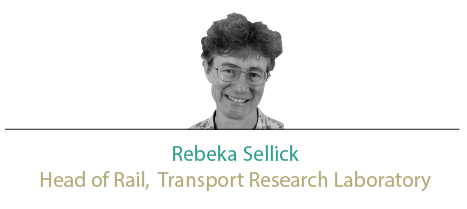
What is Transport for?
Nearly 30 years ago, after joining British Rail (whose transport business once extended to hotels and household removals), I wrote my engineering and economics masters thesis entitled Painting European Transport Green. Transport was for ‘good’, I argued - providing financial and social benefit to humankind. Thus more transport should be delivered, albeit more sustainably.
What’s changed?
Paul Clifton shares some statistics since the 1980s: bus journeys doubling (in London, but falling elsewhere); rail passenger miles doubling in the past 20 years (despite 25% real terms fares increases); car travel levelling off since the 1990s. He offers some insights from transport bodies such as TfN, ITC and the RFG, plus the automotive and university sectors.
What’s missing?
It’s a huge topic, so Paul cannot be all-encompassing, although omitting light rail is surprising. These ‘re-invented tramways’ have unlocked significant modal shifts from private cars into public transport, as have premium bus services elsewhere. He mentions freight (several topics in itself), but not air, despite the clear success of Eurostar having captured the Paris-London market.
Is he right? What role should rail take in future transport?
Looking at demand trends, the demographic direction of domestic travel is towards reducing car ownership and increasing public transport use. But with connected aspirations rising, will rail growth really be sustained as cars become autonomous? Self-driving cars could offer users something like the pleasant and useful on-board space of a train, with the added bonus of flexibility and privacy. They may even better rail’s green credentials, with shorter automotive vehicle lifecycles facilitating rapid exploitation of all-electric renewable energy sources, minimising adverse air quality impacts.
Technology now, and on the horizon
Lord Berkeley rightly identifies the challenge for freight trains to travel as fast as passenger trains, prompting electrification and infrastructure investment. But they also need to stop as fast to reduce their capacity footprint. Promising cost-effective digital solutions are being developed and trialled (presented to the 2017 IMechE Stephenson Railway Research conference).
Simple non-invasive apps conveying information and price incentives could optimise the more efficient use of rolling stock. They straightforwardly encourage greater use of spare capacity in existing trains, so more passengers benefit from the same km run. Extending this beyond the railway could embrace autonomous vehicles for connected door-to-door transport: joining with rail’s ‘competitor’, rather than trying to beat them. The live debate is whether this is best market-led or directed by a guiding mind…
Future connected transport – the long-term plan
Rail’s capacity and overall energy advantages remain in volume: from the efficient aggregation of individual passenger journeys to the delivery of bulk freight, addressing transport’s capacity challenges. Transport can drive economic growth through access to education, skills development, jobs, resources, markets. The challenge for the railway industry is indeed to adapt, so that we grow and become a more cost-effective and significant transport provider.

There are many conflicting views and suggestions here which demonstrate the difficulty in predicting the future. But this is particularly necessary and particularly hard for transport: necessary, because big decisions have to be made about infrastructure that take years (if not decades) to bear fruit; and hard because assessing future patterns of mobility is fraught with uncertainty. Who would have thought, for example, that young people would fall out of love with the car when only a generation ago to own your first vehicle was a rite of passage?
Paul Clifton starts off by reminding us that we are moving around less than we did 20 years ago, yet some of his respondents argue that increasing capacity massively is absolutely essential, otherwise gridlock will ensue. Yes, so far the advent of new information technology has not reduced the overall figures for travel, but that does not mean it will not do so in the future. Indeed, as the article points out, nearly half of rail travel is now discretionary. And from my own experience, conference call and Skype technology has saved me a few journeys. Therefore, the figures may mask a shift from one type of journey to another.
Technology is the other unknown when predicting the future, and Paul notes that the car companies are engaged in secretive research on developing autonomous cars. There are plenty of optimistic statements from the motor manufacturing industry about the imminent arrival of autonomous cars, but I would counsel caution in the face of these rather gung-ho claims. As Professor Powrie suggests: “They will be quite a long time coming, perhaps decades.” Indeed, since despite the hype and the billions spent so far, current versions are still at the stage that motor cars were when the Red Flag Act was still law.
I would argue that ‘never’ is a more sober assessment, at least in terms of universality. We are likely to get niche uses - perhaps ‘trains’ of HGVs following each other down motorways (although even here there are problems as to what to do with the damn things when they turn off), or shuttle services within airports or in town centres - but the Nirvana promised by Google of a world with pooled electric pods taking you to work and then whisking your kids to school is as likely as the world of commuting by Jetpack, which was promised in my Eagle comic during my teenage years in the 1960s.
To put just one fly in the ointment, driverless cars will have to be programmed not to drive towards people (or indeed cats, dogs and even bats). So if what the Americans call a ‘bad person’ decides to rob or rape the occupant of a driverless car, they would merely have to wait on a deserted stretch of road and stand in front of the vehicle. I have posited this scenario to numerous autonomous car enthusiasts, and they mumble responses about the technology being able to adapt, but in truth they are stumped.
No wonder Carlos Ghosn, the boss of Nissan, let slip recently that cyclists are the worst difficulty faced by the designers of autonomous technology, and that he would like to see them banned from roads used by driverless cars. The future, therefore, is rather more complex than any of those quoted in the piece seem to imagine.
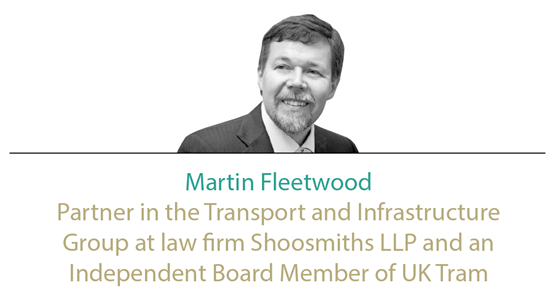
Paul’s interesting article looks well beyond the railway sphere we are used to and into the larger world of logistics. As the introduction into a series of reports on the wider transport environment, it has certainly whetted the appetite to see where rail can enhance a competitive edge or where it needs to ‘up its game’.
Arguably, the movement of freight becomes much more important than the movement of people. People can transmit ideas, documents and money by electronic means, whereas physical goods still need to be transported from their place(s) of production to their place of use or point of sale. Distribution systems using the road network have become the main method for moving goods, with many manufacturers and retail companies having ‘standard form’ haulage agreements with which they contract with road hauliers. These agreements set the minimum standards for the services they require, which is particularly important in the world of ‘just in time’ delivery. They dictate the collection times that suit their warehouses and the delivery times that work for their stores or their customers. These companies can also have an input into the environmental effects of their delivery systems, such as specifying minimum engine cleanliness through the ‘Euro’ standards.
Compare this with the rail system, where train paths have to be applied for and primarily have to fit around passenger services. Road freight is based on pallet or roller trolley sizes, which are relatively easy to load and can be manoeuvred by a single person. Rail freight primarily works on trainloads and container loads, and (as Tony Berkeley points out) this is an area where rail needs to change dramatically in order to compete with road. Some experiments in carrying small amounts of freight on passenger trains have made the headlines, but this does not provide real competition to the thousands of lorry journeys on Britain’s roads every day.
Planning for freight distribution centres has been a slow and painful process, and one that the rail industry needs to improve on. There is still a need to develop a comprehensive network of rail freight centres which can match the distribution networks of the major retailers and manufacturers. There needs to be a system to send roller trolley loads from the main warehouse to be placed on fast electric/bi-mode freight trains that can run to similar speeds as passenger trains and connect into city centre-based distribution centres. Here the trolleys can be unloaded and the goods taken to either the relevant shops or the homes of the people who ordered the goods, probably by electric vans but in certain cases by cycle courier. The issue then becomes the speed at which the loads delivered by train at the distribution centres can be quickly and efficiently moved around the city. At what point will Uber or Deliveroo be providing freight deliveries?
There is already talk of technology being used to ‘platoon’ groups of lorries so that they can travel along motorways closer together, but by using a number of connected carriages on a railway line, the distance between the vehicles is even shorter! The key is reducing the connection time, making for a relatively seamless movement between modes. This is not just the preserve of passengers wanting to move between car, train, bus or tram.
The terms on which movement of goods can be undertaken will be a key factor. Major retailers and manufacturers are used to dictating the terms for delivery, so rail freight operators will need to meet at least some of the retailers’ key requirements. This is likely to also apply to the final mile delivery system. With the developing ‘gig’ economy, there is more scope for the sellers to set the terms under which goods are delivered and to be able to change the people supplying the local distribution network if they are not pleased with the results.
While Professor Powrie suggests generating new patterns of housing and employment to drag people away from too much use of transport, the UK’s transport links have been built up over hundreds of years. Railways often followed the routes of canals, and later major roads followed the routes of railways. Changing the methods of freight distribution within a city region is a more likely achievement than changing the freight routes which supply that city region. However, with some determination and planning, increasing the modal shift from road to rail is definitely possible.
On the passenger side, the one area that was not really touched upon was whether there should be more pressure on people not to travel, particularly over longer distances. Should there be more pressure for connectivity and the establishment of virtual offices? With the growth of AI, if we look 20 years into the future and take a radical approach, how many of the existing jobs in manufacturing, for example, will actually require humans to be present?
While there is comment that autonomous vehicles disrupt the status quo, as they take away rail’s benefit of being able to work while on the move, the majority of rail trips are commutes to work or school on routes where trains provide the greatest density of passenger movement. There would be insufficient space on the roads for all people travelling in trains to be travelling in autonomous pods, even if they were running much closer together. That’s even before the debate as to how fast pods should be able to travel safely - more an engineering function of size, than what would be a reasonable speed at which to travel.
Add to this Dr Niblett’s observations that city centres are becoming increasingly pedestrianised, and the conclusion is that road vehicle use will become restricted. Indeed, the experiments on the use of shared space streets and the ‘Twenty is Plenty’ speed reduction campaigns have shown that vehicle movements are being made more subject to the needs of pedestrians.
Rather than looking at autonomous vehicles as a new enemy, the concept should be embraced as part of the overall journey. Much as people see their car or the bus as part of their journey to the railway station to catch the train, they can swap this for a journey in an autonomous vehicle. At the other end, there will still be the choice of bus, bike, taxi (Uber or otherwise), walking or another autonomous vehicle. The important part will be to tie in each leg of the journey.
A by-product of the arrival of autonomous vehicles is that there will not be such a need for car parks at stations - just a small area for drop-off and pick-up. So what would we do with the car parks that are no longer needed? In an ideal world they could then become the distribution centres for all that new roller-trolley and pallet freight that is to be brought onto rail. Too far-fetched? Maybe, but unless you start to look a little outside the box, you’ll never know!
In answer to Paul’s initial question “What is Transport For?”, I believe it is for creating an effective delivery service. As such we should be looking at how best to use new technology to help us achieve this.

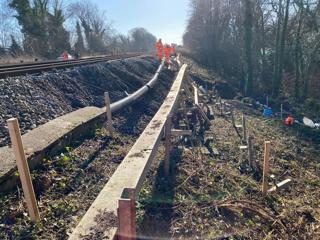
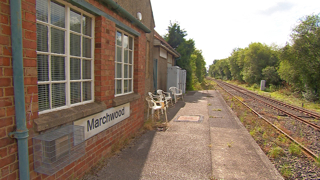
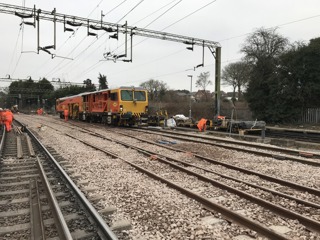
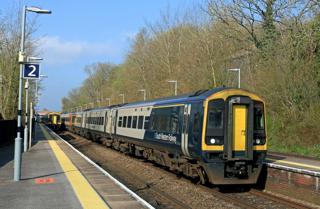
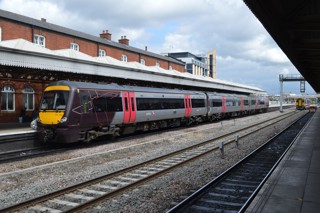

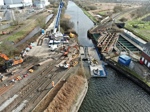







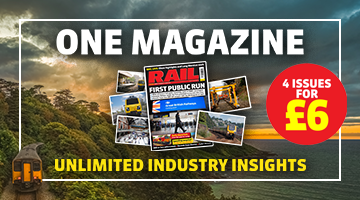

Login to comment
Comments
No comments have been made yet.